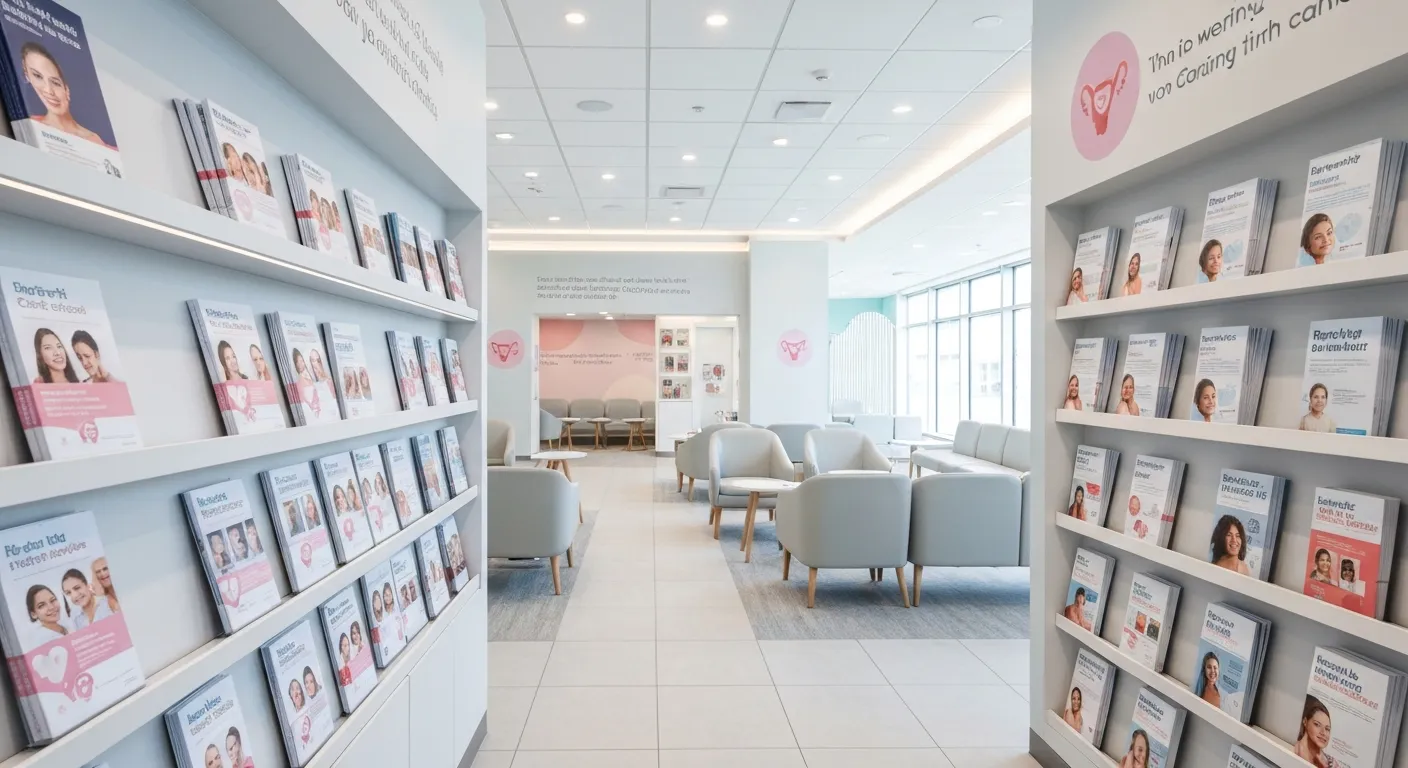Recognizing the Right Time to Address Female Infertility: Key Indicators and Expert Care in Queens

Understanding C-Section Scar Revision and Its Impact
Cesarean sections often leave behind visible scars that can affect both physical comfort and emotional well-being. C-section scar revision offers a range of cosmetic solutions designed to improve the appearance, texture, and function of these scars. This article explores the diverse procedures available, candidate criteria, expected outcomes, and recovery considerations, all aimed at restoring confidence for women seeking better scar aesthetics after childbirth.
Exploring the Main Options and Procedures for C-Section Scar Revision
C-section scar revision encompasses a variety of surgical and non-surgical approaches aimed at enhancing the appearance, texture, and function of scars resulting from cesarean deliveries. Surgical techniques often involve removing or excising the old scar tissue and re-closing the skin with advanced suturing methods to produce a finer, less noticeable scar.
One common surgical method is scar excision, which involves carefully cutting out the scar, sometimes employing techniques like Z-plasty or W-plasty to reorient the scar line and reduce tension, leading to a neater appearance. If there isn't enough healthy skin, skin grafts might be utilized to achieve optimal results.
In addition to excisional procedures, skin repositioning and reshaping are performed to correct irregularities such as indentations, hypertrophic, or widened scars. In some cases, combining scar revision with a mini tummy tuck may help address excess skin, contour irregularities, or abdominal laxity, further improving the overall lower abdomen aesthetic.
Non-surgical options also play an important role in scar management. Laser therapies, including Halo and BBL lasers, can soften raised scars, reduce redness, and improve skin color and texture. Microneedling stimulates collagen and elastin production, helping to smooth out scar surface irregularities. More advanced treatments like Morpheus8 combine microneedling with radiofrequency to tighten tissue and further diminish the visibility of scars.
The use of modern wound care techniques, including absorbable sutures and meticulous post-operative care, helps minimize the scar's prominence. These approaches contribute to better healing, reduced redness, and a finer scar line.
The decision on which method to pursue generally depends on the specific characteristics of the scar—such as size, depth, and appearance—as well as individual patient goals. An experienced surgeon can assess these factors and recommend a tailored treatment plan.
| Technique | Description | Additional Details |
|---|---|---|
| Scar excision and re-suturing | Removing old scar tissue, then sewing the area with precise sutures | Often paired with reshaping techniques like Z-plasty |
| Laser therapy | Using concentrated light to reduce thickness and discoloration | Halo and BBL lasers improve texture and color |
| Microneedling | Tiny needles create micro-wounds to stimulate collagen growth | Helps improve surface irregularities |
| Morpheus8 | Combines microneedling with radiofrequency for skin tightening | Reduces scar visibility and enhances skin quality |
| Surgical skin reshaping | Adjusting the skin's position and contour to improve scar appearance | May involve skin tightening or mini tummy tuck |
Ultimately, combining these methods often yields the most effective results. Consulting with a skilled surgeon is essential to determine a personalized treatment strategy and achieve the best possible outcome.
Cosmetic Treatments Available: From Non-Invasive to Surgical Solutions

What types of cosmetic treatments are available for improving C-section scars?
There are several options to enhance the appearance of C-section scars, ranging from simple topical applications to complex surgical procedures.
Non-invasive treatments include the use of topical products like silicone gels, sheets, and specialized creams that contain ingredients such as retinoic acid or alpha hydroxy acids. These products can help improve skin texture, reduce redness, and promote better scar healing when used consistently over time.
Minimally invasive options encompass dermabrasion, chemical peels, and laser treatments. Laser therapy, particularly fractional and non-fractional laser skin resurfacing, can soften scar tissue, even out skin tone, and decrease scar visibility. Microneedling, which creates tiny controlled skin injuries, stimulates collagen production, leading to smoother, healthier-looking skin.
For scars that are raised, red, or thickened, corticosteroid injections like triamcinolone are often employed to shrink the lesion, reduce redness, and alleviate associated discomfort.
In cases where scars are deep, wide, or poorly healed, surgical revision may be the best choice. Procedures such as scar excision, Z-plasty, or W-plasty involve cutting out the old scar tissue and re-closing the skin in a way that minimizes prominence and improves cosmetic appearance.
Additionally, some practitioners use scar camouflaging techniques, including medical-grade pigmentation and dermal fillers, to blend scars with surrounding skin, making them less noticeable.
Overall, the combination of these treatments allows patients to select minimally invasive options for minor issues or opt for surgical revision for more significant concerns, achieving tailored results based on individual scar characteristics.
Who Is an Ideal Candidate for Scar Revision Surgery?

Characteristics of suitable candidates
A suitable candidate for C-section scar revision is typically someone who is dissatisfied with the appearance of their existing scar. This could include scars that are wide, raised, indented, discolored, or causing discomfort such as itching or tightness. Candidates often want to improve the aesthetic contour of their abdomen and boost self-confidence.
Importance of health status and skin condition
Good overall health is essential for surgical candidates. This includes being free from serious medical conditions that could impair healing or increase surgical risks. The skin in the area should be healthy, free of active infections, skin diseases, or other dermatological issues that could interfere with healing.
Timing post-C-section for surgery
It is generally advised to wait at least 6 months to 1 year after a C-section before considering scar revision. This allows the scar tissue to fully mature, which can lead to better surgical outcomes and reduce the risk of complications. Healing and scar stability are important factors in planning the operation.
Managing expectations and psychological readiness
Candidates should have realistic expectations about what scar revision can achieve. While it can significantly improve appearance, it may not make the scar completely invisible. Psychological readiness is also vital, as some patients seek surgery for emotional reasons and must be prepared for the recovery process and potential outcomes.
Consultation and surgeon evaluation process
During the consultation, the surgeon will thoroughly assess the scar, review medical history, and evaluate overall health. This may include examining the scar’s size, depth, and location, as well as skin elasticity and tissue quality. They will discuss the patient’s goals, options available, and potential risks to determine if they are a good candidate.
Candidates are typically women who are finished with pregnancies and have healed from childbirth, want to correct deformations or contour irregularities, and are willing to follow pre- and post-operative care instructions to optimize healing and results.
Benefits, Expected Outcomes, and Managing Expectations
What are the benefits and potential outcomes of C-section scar revision procedures?
C-section scar revision provides several advantages that can enhance a woman’s confidence and comfort. The procedure aims to reduce the prominence of thick, raised, or retracted scars, leading to a more refined and aesthetically pleasing appearance. It can also address common concerns such as redness, bulging, and irregular textures, helping scars blend better with surrounding skin. In addition to improving looks, scar revision can alleviate discomfort caused by tethered or adhered tissue, such as tightness or itching. Some surgeries include removing excess skin or scar tissue and tightening the abdominal area, which may also improve the overall contour. Recovery typically involves some swelling, bruising, and mild discomfort initially, while scar maturation and fading can continue for several months. Proper postoperative care, including scar massage, sun protection, and possibly silicone treatments, supports optimal results. Overall, the procedure can make scars less visible, less uncomfortable, and more aligned with the natural contours of the abdomen.
What results can be expected from C-section scar revision, and how should expectations be managed?
Patients undergoing scar revision can generally expect a noticeable improvement in scar appearance. The revised scar is often finer, flatter, and better positioned. It may be less red and irregular, creating a more natural skin tone and texture. Some patients experience immediate improvements, but final results develop gradually over 1 to 3 months as healing progresses.
While surgical revision can significantly enhance the look and feel of a scar, it is important to maintain realistic expectations. Complete removal of the scar or perfect concealment is unlikely, as scars tend to leave some residual visibility. The goal is often to achieve a scar that is less noticeable and more harmonious with surrounding skin.
Patients should also understand that factors like skin type, healing response, adherence to postoperative instructions, and individual genetics influence the outcome. Combining surgical repair with proper scar care, sun avoidance, and possibly non-surgical treatments like microneedling or laser therapy can optimize results.
By managing expectations and understanding these factors, patients can be more satisfied with their improved appearance and increased comfort post-procedure.
Non-Invasive and Minimally Invasive Techniques in Scar Revision

What non-invasive or minimally invasive techniques are used in C-section scar revision?
When it comes to improving the appearance and texture of cesarean scars, several modern, less invasive options are available. These techniques can be performed in outpatient settings, often with minimal discomfort and downtime.
Laser therapy stands out as a popular choice. Fractional CO2 and Er:YAG lasers are frequently used to address surface irregularities such as rough texture or pigmentation. These lasers work by creating tiny zones of injury in the skin, stimulating collagen production and remodeling from within. Over multiple sessions, laser treatments can soften raised scars, lighten discoloration, and improve overall skin smoothness.
Microneedling with radiofrequency (RF), often branded as Morpheus8 or similar devices, combines tiny needle punctures with thermal energy to stimulate deep collagen production. This method is especially effective for larger scars or those with uneven texture, as it tightens skin and smooths out imperfections without damaging the surface.
Steroid injections are another minimally invasive approach, particularly effective for hypertrophic or keloid scars. Injected directly into the scar tissue, triamcinolone acetate helps reduce thickness, redness, and discomfort. Sometimes, this treatment is combined with other agents like 5-Fluoruracil for more stubborn scars.
Topical therapies, such as silicone gels or sheets, maintain hydration and create an environment favorable for collagen balance, gradually improving scar appearance and elasticity. When depressions or indentations are present, injectable fillers like hyaluronic acid can be used temporarily to lift the scar and make it blend harmoniously with surrounding skin.
For more significant scar issues, a mini C-tuck procedure may be considered a minimally invasive surgical option. This involves removing old scar tissue and creating a new, finer scar line without extensive surgery, typically performed under local anesthesia.
In combination, these non-invasive and minimally invasive options provide a comprehensive toolkit for customizing treatment plans to enhance scar appearance, boost confidence, and reduce discomfort.
Recovery and Post-Procedure Care: What to Expect

Typical recovery timelines
The recovery process after C-section scar revision varies but most patients begin to see improvement within the first week. Typically, swelling and bruising decrease significantly after 7 to 10 days. While initial healing occurs quickly, the full maturation and fading of the scar can take up to 1-2 years. Patients usually resume normal activities in about 2 weeks if the procedure was minor, but more extensive surgeries, especially with additional treatments like a tummy tuck, may require longer recovery periods.
Wound care and activity restrictions
Post-surgery, keeping the incision clean, dry, and protected is essential. For the first 48 hours, patients should follow their surgeon’s instructions regarding showering and avoiding submersion in water. Strenuous activities, heavy lifting, and sexual intercourse are generally restricted for about 2-4 weeks to avoid tension on the healing tissue. Wearing an abdominal binder as recommended for up to 8 weeks can help support the healing process. Gentle walking every 2 hours is encouraged to promote circulation and reduce the risk of blood clots.
Pain and swelling management
Mild discomfort and swelling are common after the procedure. Pain is typically managed with prescribed medications, and any additional pain or tenderness should improve over the first week. Applying cold compresses can help reduce swelling, and elevating the legs when resting can assist circulation. Patients should avoid NSAIDs or other medications their surgeon advises against, to prevent bleeding or interfere with healing.
Long-term scar maturation and care
As healing progresses, the scar will continue to mature and fade. Proper scar care, including the use of silicone gel sheets or scar massage, may be recommended to enhance appearance. Protecting the scar from sun exposure with sunscreen or clothing is crucial, as UV rays can cause hyperpigmentation and make scars more visible. Regular follow-up appointments allow the surgeon to monitor the scar’s evolution and suggest additional treatments if needed.
Importance of sun protection and follow-up
Sun exposure can significantly affect scar appearance, leading to darker discoloration that persists long-term. Consistent use of high-SPF sunscreen on the scar area is recommended, especially during the first year. Follow-up visits enable surgeons to assess healing, address any complications early, and provide guidance on scar management. With proper care, most patients enjoy a significant improvement in their scar’s appearance and overall abdominal contour.
Risks, Considerations, and Insurance Coverage

What risks and considerations are associated with C-section scar revision?
C-section scar revision involves addressing various health and surgical factors. Possible risks include infection, scarring recurrence, and changes in skin sensation, such as numbness or tingling. Surgical risks might involve injury to nearby organs, excessive bleeding, or unfavorable wound healing. Anesthesia-related complications, although rare, are also considerations. Patients with certain conditions—such as being overweight, having diabetes, smoking, or multiple prior cesareans—may experience higher complication rates. These can include persistent scar problems like hypertrophy or keloids, as well as symptoms like pain or abnormal bleeding, sometimes due to isthmocele, a niche or pocket within the scar. The impact on future pregnancies is an important consideration. Scars may increase the risk of uterine rupture, placental attachment issues like placenta accreta, or scar pregnancy if not carefully managed during subsequent deliveries. Detailed consultation with a surgeon helps evaluate these factors. It’s crucial for patients to thoroughly discuss their health history, concerns, and goals with their surgeon. Understanding potential risks and benefits ensures informed decision-making and better surgical outcomes.
Restoring Confidence Through Tailored Scar Revision Solutions
C-section scar revision presents a comprehensive array of options, both surgical and non-surgical, tailored to improve the aesthetic and functional outcomes of cesarean scars. Understanding the variety of techniques—from minimally invasive treatments like laser therapy and microneedling to surgical interventions including scar excision and mini tummy tuck—enables women to make informed decisions. Recovery requires careful wound management and realistic expectations about scar improvement. Although risks exist, thorough consultation with experienced plastic surgeons ensures personalized care and optimal results. Ultimately, these procedures empower women to reclaim confidence and comfort in their bodies after childbirth.
References
- C - Section Scar Revision - Dr. Ashley Howarth
- C-Section Scar Removal Treatments | Donaldson Plastic Surgery
- C-Section Scar Revision Boca Raton & West Palm Beach
- C-Section Scar Revision - Revitalize Plastic Surgery - Troy MI
- C-Section Scar Revision in San Antonio, TX
- Mini C-Tuck For Scar Revision In NYC & Long Island | New You
- C-Section Scar Revision Fort Lauderdale
- Scar Revision Surgery - Vaginal Rejuvenation Clinic
- NYC Scar Revision Plastic Surgery | UES Scar Correction





.png)